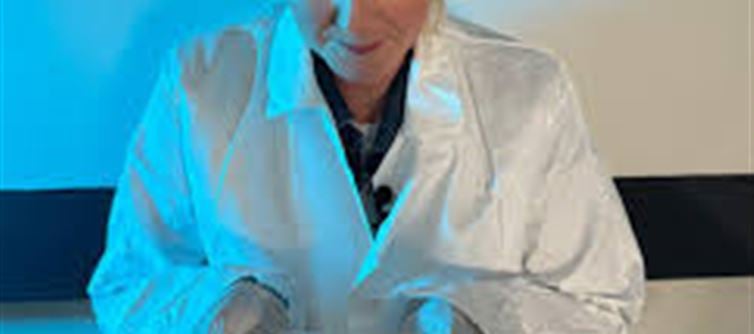
In a revolutionary breakthrough, scientists have taken a huge leap forward in blending biology and technology. The concept of computers powered by living cells—once considered pure science fiction—is now becoming a reality. This new technology is not only mind-boggling but could redefine how we think about computing, energy consumption, and the intersection of biotechnology and electronics. Here’s everything you need to know about this game-changing innovation:
1. The Concept: Living Cells as Power Sources
Imagine a biological computer running on the power of living cells instead of traditional silicon chips. This concept is now being explored by biotechnologists and scientists who are working on integrating biological organisms with electronic circuits. The idea is to create a biocomputer that uses the inherent energy of living cells to perform computational tasks—potentially opening up new frontiers in computing and sustainability.
2. The Breakthrough Technology: Bio-Electronics
At the heart of this incredible feat lies bio-electronics—the merging of biological materials with electrical circuits. Researchers have made remarkable progress in harnessing the electrical conductivity of living cells, particularly neurons and bacteria. By connecting these cells to microchips, scientists can use the biological organisms to power and process data, paving the way for a future where computers run on biological power.
· Key achievement: Living cells can be engineered to function as miniature power sources, making the concept of a biocomputer feasible.
3. How It Works: Harnessing Bioelectricity
Living organisms, especially neurons, already produce bioelectric signals to communicate within the body. Scientists have now figured out how to tap into this process, converting the electrical energy generated by cells into usable power for computers. Through cutting-edge techniques like genetic engineering and biomolecular circuits, these cells can now help transmit information and power wallet PLATFORM' target='_blank' title='digital-Latest Updates, Photos, Videos are a click away, CLICK NOW'>digital devices.
· Example: Certain bacteria can be used to create biofuel cells, which generate energy to run small electronic devices.
4. The Potential Benefits: Sustainable and Efficient Computing
This technology promises several exciting benefits:
· Lower Energy Consumption: Biological computers could consume far less power than traditional silicon-based systems, making them more energy-efficient.
· Sustainability: Living cells can be self-replicating and biodegradable, making the technology environmentally friendly and sustainable.
· Enhanced Efficiency: Bio-electronic systems might operate more efficiently, especially in areas requiring high processing power like data centers or medical diagnostics.
5. Ethical and Safety Concerns: A New Frontier in Technology
With any groundbreaking technology, there are always ethical and safety considerations. Using living cells in computing systems raises important questions:
· Ethical dilemmas: How will we ensure that the technology is used responsibly, especially when it involves living organisms?
· Safety issues: Can these bio-powered systems be safely integrated into existing technologies without posing risks to human health or the environment?
6. The Future of Bio-Computing: A New Age of Technology
This development is still in the early stages, but it holds the potential to radically transform the future of computing. Researchers are optimistic about the possibility of creating biocomputers that are more energy-efficient, sustainable, and powerful than current wallet PLATFORM' target='_blank' title='digital-Latest Updates, Photos, Videos are a click away, CLICK NOW'>digital systems.
· Key vision: Bio-computers could revolutionize industries like medicine, environmental monitoring, and data processing, thanks to their unique ability to blend biology with electronics.
7. Impact on Traditional Computing and AI
This new approach to computing could significantly impact artificial intelligence (AI) and machine learning. Bio-powered systems may enhance neural networks by mimicking biological processes, leading to more efficient algorithms and faster processing. Additionally, the environmental benefits could reduce the carbon footprint associated with running large AI systems.
8. Conclusion: A Future Powered by Cells
The fusion of biology and technology is no longer a futuristic dream but an emerging reality. With scientists working hard to develop living-cell-powered computers, the future looks incredibly promising for a world where computing is not only smarter but also greener. While still in its infancy, this breakthrough promises to shape the next generation of technology—one where living cells fuel the wallet PLATFORM' target='_blank' title='digital-Latest Updates, Photos, Videos are a click away, CLICK NOW'>digital age.
The integration of biology and technology marks a revolutionary step forward in how we interact with and use computers, and it’s only a matter of time before these systems are mainstream in everyday life. Prepare for a future of computing that’s alive in every sense of the word!
Disclaimer:
The views and opinions expressed in this article are those of the author and do not necessarily reflect the official policy or position of any agency, organization, employer, or company. All information provided is for general informational purposes only. While every effort has been made to ensure accuracy, we make no representations or warranties of any kind, express or implied, about the completeness, reliability, or suitability of the information contained herein. Readers are advised to verify facts and seek professional advice where necessary. Any reliance placed on such information is strictly at the reader’s own risk..jpg)




 click and follow Indiaherald WhatsApp channel
click and follow Indiaherald WhatsApp channel